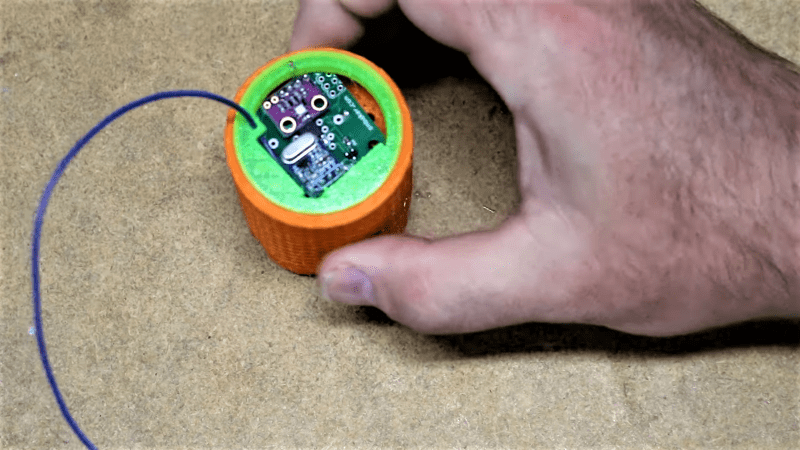We don’t know where [Scott M. Baker] calls home, but it must be a pretty humid place indeed. After all, he has invested quite a bit in fancy vacuum storage containers to keep his 3D-printer filament dry, with the result being this sensor-laden filament drying farm.
[Scott] wasn’t content to just use these PrintDry containers without knowing what’s going on inside. After a little cleaning and lube to get all the containers working, he set about building the sensors. He settled on a wireless system, with each container getting a BME280 temperature/humidity/pressure sensor and an SYN115 315-MHz ISM band transmitter module. These go with an ATtiny85 into a compact 3D-printed case holding a little silica desiccant. The transmitters are programmed to comply with ISM-band regulations – no need to run afoul of those rules – while the receiver is just an SDR dongle and a Raspberry Pi running rtl_433. The long-ish video below details design and construction.
The idea behind these vacuum containers would seem to be to pull out humid air and prevent it from coming back in. But as [Scott] quickly learned from his telemetry, following the instructions results in the equivalent atmospheric pressure of only about 2700′ (823 meters) elevation – not exactly a hard vacuum. But as [Scott] points out, it’s enough to get a nice, tight seal, and his numbers show a lowered and constant relative humidity over time.
















I don’t know what type of filament he’s using but for PLA moisture is not the real issue. Being exposed to air and UV light seems to be causing the biodegradable PLA to get brittle. I think Makers Muse on YT debunked the moisture myth by soaking some of his PLA in water for a day and then printing without any issues and Alex Kunis did some experiments too. For other filaments like Nylon and maybe PETG moisture is more of a problem. I store my filaments in a zip lock bag inside an opaque box and did not see any issues after the switch.
When my PLA is stored at 5% relative humidity it gets rid of the bubbles and oozing that happen when left out in 60% relative humidity in the summer. I haven’t measured how long it takes to absorb the moisture though.
This is completely anecdotal, but I printed two holders to hold up a bird feeder on a fence post. I made it in PLA and stuck them to the fencepost with gorilla glue.
It has been outside in full Canadian summer/winter cycle (lot of sun with no shade, by the way) for about four or five years now and I inspected it recently. If the PLA has been significantly degraded in any way, I can’t tell.
I’m sure it hasn’t been done any favors by being outside and I’m not suggesting it’s in pristine condition. But I can say that whatever damage it has suffered, in this particular case, is not something I can casually detect.